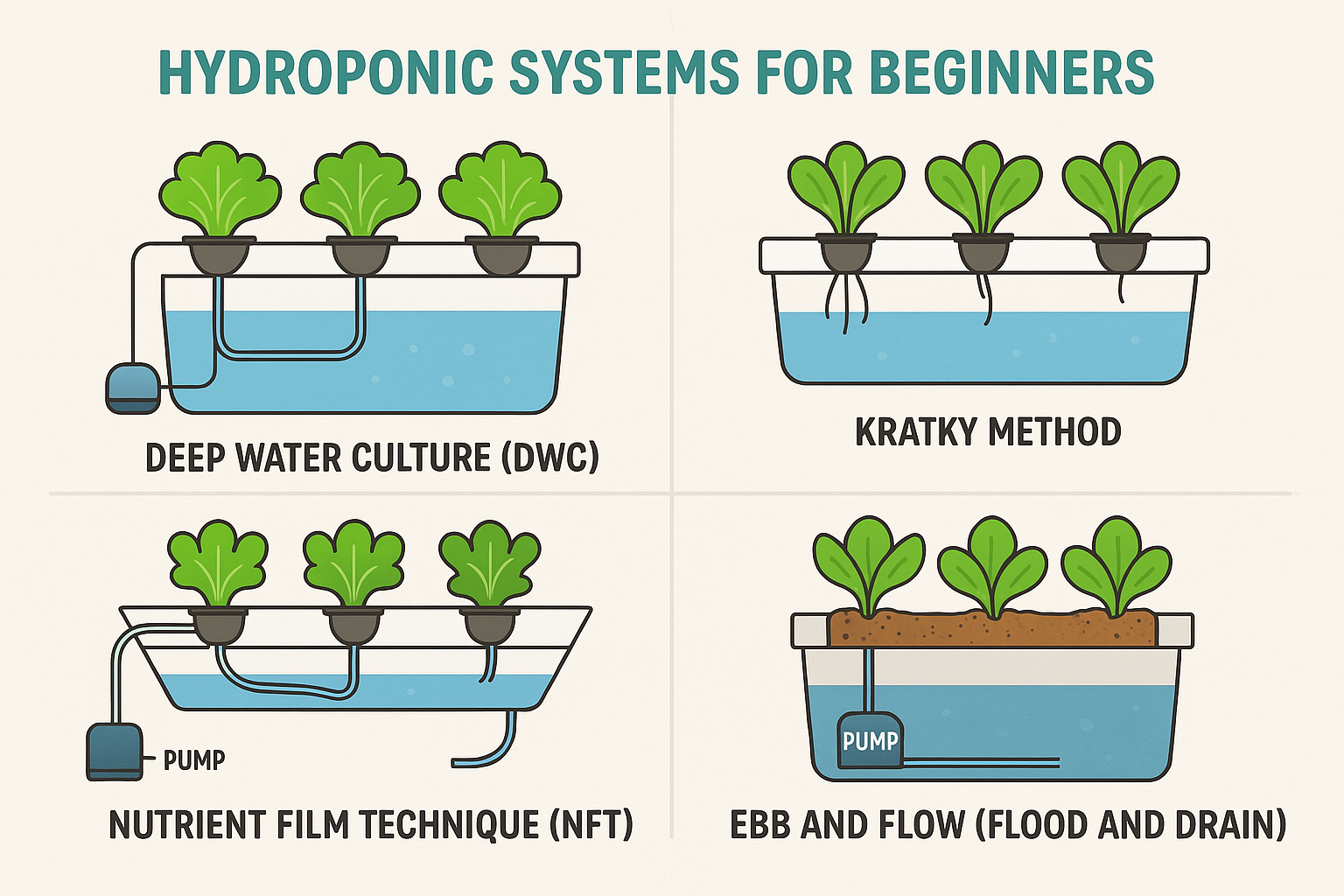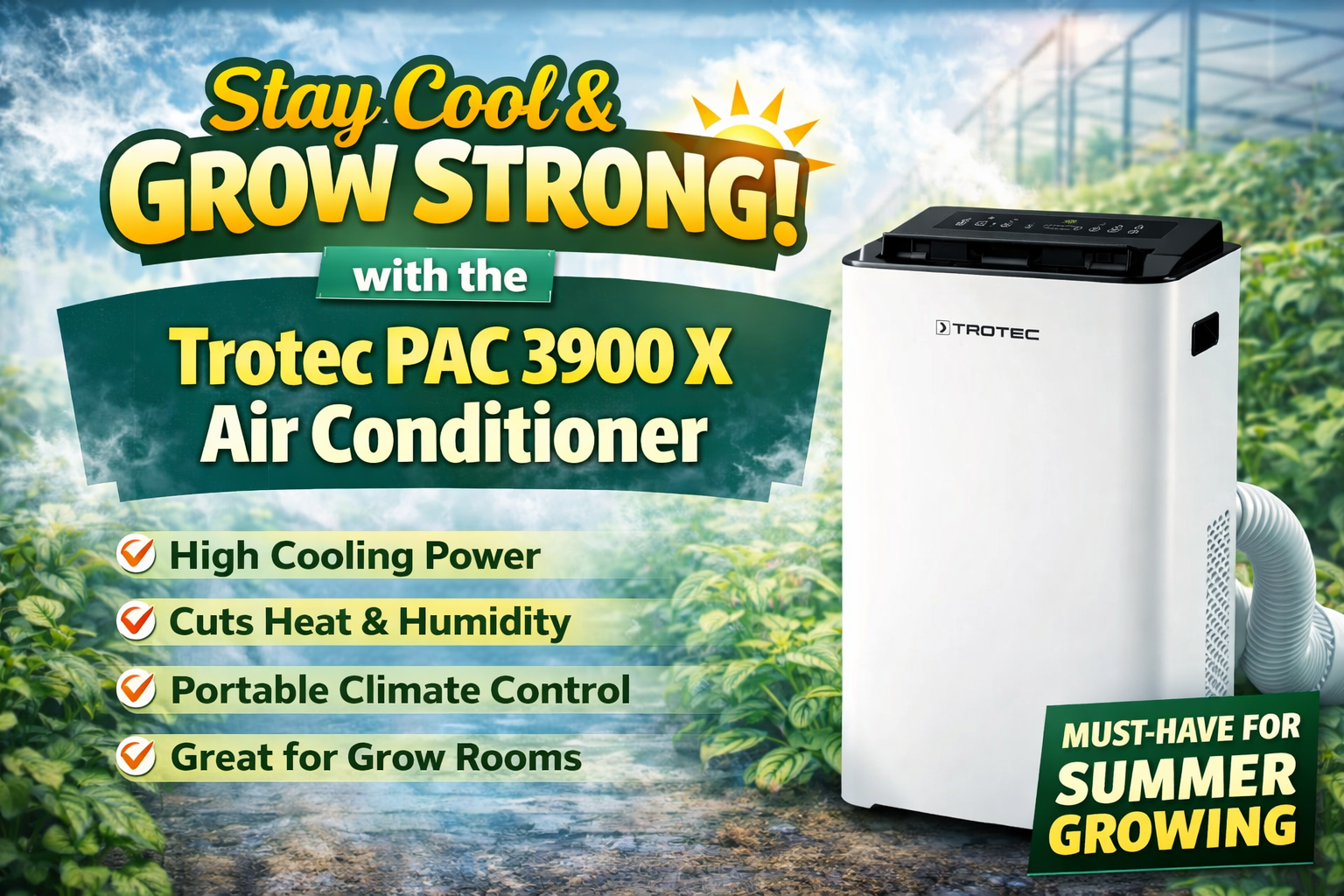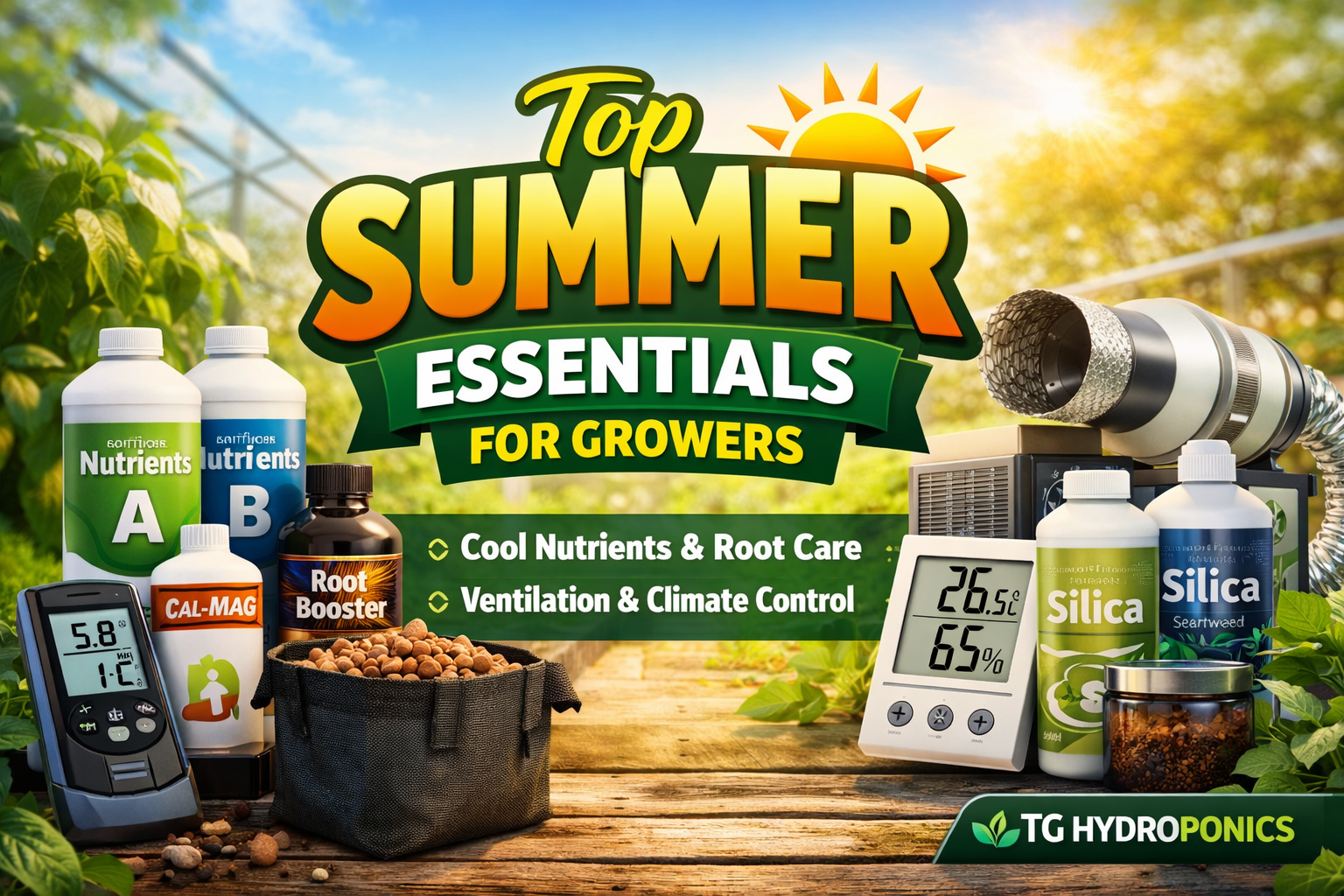Ready to dive into the exciting world of hydroponics but not sure where to start? One of the first and most crucial decisions for new growers is choosing the right hydroponic system. Don't worry! At TG Hydroponics, we're always here to help you. This article will introduce the most popular and accessible hydroponic systems, ideal for those new to this soil-less growing method, especially here in Australia.

Why Is Choosing the Right System Important?
Each hydroponic system operates differently and has varying requirements for equipment and complexity. Choosing the correct system from the outset will save you time, effort, and money, while ensuring a successful and enjoyable growing experience.
Let's explore the top choices for beginners with TG Hydroponics:
1. Deep Water Culture (DWC) System

DWC is one of the simplest and most popular systems, particularly well-suited for beginners.
- How it Works: Plant roots are suspended directly in a nutrient solution held in a container or reservoir. An air pump and air stone are used to provide continuous oxygen to the roots, preventing rot and promoting nutrient uptake.
-
Pros:
- Simple, easy to set up: Fewer moving parts, straightforward installation and maintenance.
- Low cost: Basic materials like containers, net pots, and air pumps are relatively inexpensive.
- Fast growth rates: Roots have constant access to abundant nutrients and oxygen, leading to very rapid plant development.
- Suitable for many plants: Especially good for leafy greens like lettuce, kale, and herbs.
-
Cons:
- Prone to pH and EC fluctuations: Because the solution isn't constantly recirculated, regular checking and adjustment are needed.
- Less flexible: Difficult to modify or expand once set up.
- Not ideal for large fruiting plants: Plants with extensive root systems and higher nutrient demands might struggle.
- Best For: Beginners, growing leafy greens, and herbs.
2. The Kratky Method

If you're looking for maximum simplicity and want to avoid using electricity, the Kratky Method is an excellent choice. It's a "passive" hydroponic system.
- How it Works: Plants are placed in net pots and suspended above a reservoir containing a nutrient solution. As the plant grows, its roots absorb the solution, and the water level in the reservoir drops. The air gap created above the receding water provides oxygen to the roots, eliminating the need for an air pump.
-
Pros:
- Extremely simple: No electricity, no pumps, no air stones.
- Very low cost: Only requires a container, net pot, and nutrient solution.
- Easy to maintain: Fewer elements to monitor than other systems.
- Ideal for beginners: Perfect for trying hydroponics for the first time.
-
Cons:
- Only suitable for leafy greens: Plants that require a lot of water and nutrients over a long period, like tomatoes or cucumbers, are not ideal.
- Non-recirculating: Each growing cycle typically requires discarding and refilling the nutrient solution.
- Less control: Difficult to adjust nutrient levels or oxygen once established.
- Best For: Beginners, those wanting to try hydroponics with minimal investment, and growing quick-harvest leafy greens.
3. Nutrient Film Technique (NFT) System
NFT is a popular system in commercial farms and is also favoured by many home hydroponic enthusiasts due to its high efficiency.
- How it Works: Nutrient solution is pumped from a reservoir up to sloping channels or tubes, forming a thin "nutrient film" that flows over the plant roots before draining back into the reservoir for recirculation. Roots are exposed to both nutrients and air.
-
Pros:
- Efficient water and nutrient use: The solution is continuously recycled.
- Good oxygen supply to roots: The thin film allows roots ample access to air.
- Easy to harvest: Often designed in rows, making harvesting convenient.
- Aesthetically pleasing: Can create a very attractive hydroponic garden setup.
-
Cons:
- Dependent on electricity: Requires the pump to run continuously; roots can dry out if power is lost.
- Risk of clogging: Roots can grow too large and block the channels.
- Higher technical requirement: Requires control over the slope and flow rate of the solution.
- Best For: Beginners with a bit more experience, those looking to scale up, growing leafy greens, and some smaller fruiting vegetables.
4. Ebb and Flow (Flood and Drain) System
The Ebb and Flow system operates on cycles of flooding and draining the nutrient solution, allowing plant roots to both absorb nutrients and access oxygen.
- How it Works: Nutrient solution is periodically pumped from a reservoir up to a growing tray to flood the plant roots for a set duration. The solution then drains back into the reservoir via gravity or a pump. This cycle is repeated multiple times throughout the day using a timer.
-
Pros:
- Excellent oxygen supply: Roots get ample air exposure during the drain cycle.
- Flexible with growing media: Can use various media (clay pebbles, perlite, rockwool).
- Suitable for many plant types: Can grow both leafy greens and some fruiting plants.
- Highly efficient: Plants thrive due to optimal nutrient and oxygen delivery cycles.
-
Cons:
- Dependent on electricity: Requires a pump and timer to operate precisely.
- Risk of root desiccation: If the pump or timer fails, roots can dry out.
- More complex than DWC/Kratky: Requires more equipment and careful setting of flood/drain cycles.
- Best For: Beginners seeking a more versatile system, growing leafy greens, fruiting vegetables, and flowers.
Top Tips from TG Hydroponics for New Growers
- Start Simple: As a beginner, opt for DWC or the Kratky Method. They will help you familiarise yourself with the basic concepts of hydroponics without feeling overwhelmed.
- Invest in Quality: Even with the simplest system, using high-quality nutrient solutions, reliable pH/EC meters, and good seeds will make a significant difference.
- Be Patient and Learn: Hydroponic growing is a continuous learning process. Don't be afraid to experiment and learn from any mistakes.
- Regular Checks: No matter the system, consistently checking the pH and EC levels of your nutrient solution is critical to ensure your plants get exactly what they need.
At TG Hydroponics, we offer a full range of ready-to-use hydroponic kits for beginners, from simple DWC systems to more advanced NFT and Ebb and Flow setups. You can also find everything you need, from nutrient solutions, growing media, air pumps, water pumps, to testing equipment and grow lights.
Don't miss our Winter Sale with up to 50% off on selected items! It's the perfect opportunity to kickstart your hydroponic journey at the best possible cost.
Ready to turn your gardening dreams into reality? Visit our website at tghydroponics.com.au or contact us directly via phone: 0405546688 or email: tonygarden3020@gmail.com for expert advice!




